Let’s Get Ready (For School)
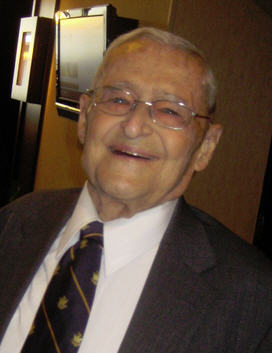
It was a Thursday afternoon at Willow. Big Jim and Liz-with-an-S and the irrepressible Jasper were attempting to manage the crowd at the Amen Corner. Jon-wiithout and John-with were enjoying drinks next to Old Jim, and Long Hair Mike was chatting up Jarhead Ray as they immersed themselves in the wonderful world of post-work at QualComm across the street. I was meeting the Admiral for one of our weekly sessions, and had got up to the point when he was coming home from Europe in 1953. The Korean conflict had raged while he was in Europe, and it was time for the military to adjust to the end of a war that had sucked five million Americans into the whirling vortex.
I had two pens and remembered a notebook for a change. I got a crisp happy hour white from Liz-S, and opened the notebook to the last scrawls halfway down the page. “OK- back from Europe and back to the grind here in Washington.” My pen hung above the notebook as I let some cool refreshing wine swirl on my palatte.
Mac cleared his throat and prepared to resume the tale. “So, I had a total of about two and a half years with the CINCNELM staff, a year in London and a year in Naples, then six months back in London, before I returned to the U.S. in December-January 1952-1953. I left in December and we arrived here in January. When I left London to come back to Washington, I had orders to return to the Special Intelligence Section, Yl, and I was looking forward to it. I was obviously comfortable with OPINTEL, and there were new threats to deal with as the Soviets became more truculent in their approach to diplomacy.”
“Funny that we can look back on it with a certain fondness. But you missed Korea.”
“Yes, I did miss it. The war was over on the Peninsula by July of 1953, and my time overseas almost coincided with the entire duration of the conflict. So I never include it on my biography, even if the experience in the Police Action diverted attention from a growing Soviet threat, and framed many of the intelligence issues of the day. So, despite nto haveing been there, Korea was a factor in everything: rising Red China, Russian proxies and surrogates, all the things that were going to happen in the Cold War,” said Mac. “After the ship docked in New York, we drove down to Washington and I stopped to call the head of “Y” branch, who I think was then-Captain Bruce Weber. I told him I was in the country and was going on leave, that I would be reporting in by such and such a date. He said, “I’m glad to hear from you; I’m glad to know all that, but your orders have been changed. You aren’t going to be working for me; you’re going to the Naval Intelligence School in Anacostia.”
“My Grandfather knew the place in the 1930s. That is where he and his Bonus Army comrades camped when they were demanding Government benefits for their wartime service.”
“Anacostia had not changed much. Still flat and green and prone to flooding. The school was located in one of the World War Two splinter-ville wooden buildings. I felt that the bottom had dropped out of my career. I had been rail-roaded out of the OPINTEL I loved so much. Instead, I was being sent to a back-water job that I had earlier turned down as being undesirable, and as far as I was concerned, was still undesirable. The only saving grace was that Captain Sam Frankel, a dear friend that I’d served under before at JICPOA in Hawaii. He was the Director, and I would have been happy to serve with him again in the right billet. I did call him up, and he was very gracious. He invited me and the family to stay at his home until we got settled, which wasn’t necessary because we were going on leave to Billie’s home down in southern Virginia. We got ourselves settled in, but I still was disappointed to not be going back into ONI and OPINTEL. Instead, I was going to be exiled to the wasteland of the basic school.”
“I can imagine the disappointment you felt after operating on major four and five-star staffs in real combat situations, or having lunch with Marshal Tito. The Schoolhouse would seem like a back-water.”
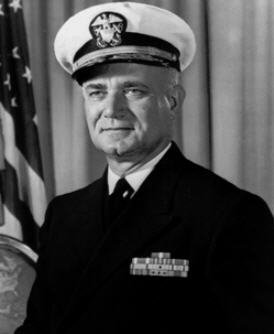
(RADM Samuel Frankel. In his military career, he served in the USS Trenton (CL-11), Augusta (CA-31), Chester (CA-27), and Chaumont (AP-5). Following this sea duty, he was Russian language student in Riga, Latvia, 1936-1938. He then served in the USS Ellet (DD-398) as gunnery officer and XO. He was Assistant Naval Attaché, Moscow, and Assistant Naval Attaché for Air, Murmansk-Archangel. In that connection with Lend-Lease shipments to the Soviet Union, he directed repairs to U.S. vessels, salvaging stranded and abandoned ships, and supervised hospitalization and repatriation of survivors of Nazi U-Boat attacks. Later, he rose to become Deputy Director of Naval Intelligence, and his last job on active duty was as Chief of Staff at DIA, the same job Mac held years later).
“I made an appointment and told Captain Frankel of my misgivings, my concern and my general lack of interest in educational matters. He said he appreciated my opinions and he was very accommodating. He said, “I’m going to give you six weeks to look at the curriculum and find out what we’re doing and then I’m going to let you pick the part that you’d like to be responsible for. So I did that. I sat in the lectures and looked at the curriculum and it became evident to me, and fairly soon, that despite the changes made by Captain Hindmarsh and Captain Layton, and the good work that Captain Frankel was doing, the program was still weak on OPINTEL, or at least the way I understood it from wartime operations. There were limitations on what we could teach, since we could not talk about Communications Intelligence, which was still heavily classified.
“COMINT,” I said.”But the Russians knew all about it. They had intelligence collectors everywhere in the government, and penetrated the Manhattan Project and just about everything else we were doing.”
He nodded, still passionate about the times and his tour. “The Russians were superb in their Human Intelligence capabilities. Still are, for that matter. Back then, our students were not cleared. I don’t believe there were any clearances provided for the school staff, and certainly not among the stud ents, most of whom were brand new to the Navy. So you couldn’t talk about COMINT as being a major source of what we called OPINTEL in the Navy. Instead, we had to talk about the other sources, so it made it a very artificial to try to emphasize the importance and significance, and the role of OPINTEL in supporting fleet activities and fleet operations in command decisions when you couldn’t talk about the main ingredient of intelligence.”
I nodded as I scribbled furiously. “By the time I went through the basic course, they had decided to send us all through the Armed Forces Air Intelligence Training Center at Lowrey Air Force Base in Denver. It was a weird relic of Vietnam and the Cold War. We had to be in class at 0600 in the morning and they let us go at lunchtime, just as if there was another class coming in behind us in the Afternoon, which there hadn’t been since Saigon fell. Was there ever any thought to establishing a sub- curriculum at the school for people who were heading for OPINTEL billets?”
“Not at that time. Of course, many years later all these things developed more realistically, particularly when they merged the All-Source and Air Intelligence communities together in 1968. I think, now, students in many of our schools are cleared for COMINT and other compartmented subjects. At that time, in 1953, there were no clearances for instructors or students.”
“At Denver, they worked our tickets in parallel with the course, and it was a big deal when we were getting to the Strategic block that they gave us our Top Secret Special Compartmented Intelligence Clearances. It was pretty cool. We thought we were real hot-shots. I am sure you could have done a lot more if the students had been cleared. But the school was really concerned with giving everybody a common baseline of capabilities, right?”
“That’s right, but it turns out that what was needed was even more simple than that. What I was trying to do was identify the areas where I felt that the curriculum was weak, and to contribute to the development of Operational Intelligence. I found two main areas of concern. One was nava l comrnunications , and the other was the ability to write succinct messages and to handle them properly, Naval Communications traffic was not a subject that was taught at the school at all . This was important because, at that time, the Naval Intell igence School was running two six – month classes per year, and eighty percent of our input was from Officer Candidate School and were mostly Ensigns.”
“Just like you were when you reported to Station HYPO” I said with a laugh.
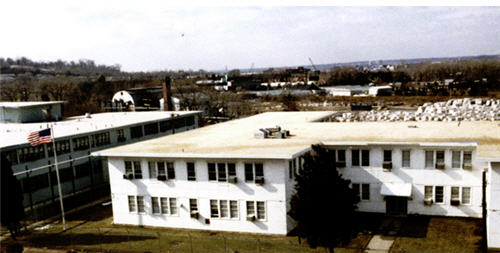
(Naval Intelligence School at Anacostia, circa 1960).
Mac had the grace to humor me. “Our students had just come into the Navy; they’d been through OCS; and now they were coming to learn about intelligence, and among other things they needed to know about communications, and the very basic ingredient of OPINTEL. They didn’t know anything about naval communications either. Not how it worked, or how you wrote messages to effectively explain complex issues in a briefing format. The other thing I inserted into the course was what I called ‘observation and reporting.’ ”
“Useful topics for people who are supposed to be collectors of information,” I remarked. “They used to work us over on sample briefings on Soviet military capabilities to the class at Denver. But the good news was that any classified research had to be done at the library, which was cleared for Secret. We couldn’t take anything home for study and after a while, some of the people in my class would just go to the Officer’s Club at lunch and stay until Happy Hour.”
“I see some things haven’t changed. We couldn’t do that due to the clearance problem. What we came up with was a work-around that was useful to show the Ensigns how to do basic unclassified research. But we liked a hands-on approach. We used to take the school on field tri ps. One destination was the base at Quantico where the Marines put on some magnificent demonstrations of amphibious warfare capabilities. We also took them to Patuxent River to let them see the Naval Air Test Center, and to the David Taylor Model Basin where they test hull designs. A lot of the installations around here that show the exotic function of naval warfare, which we felt was a necessary part of the basic education in intelligence. We also encouraged them to look at the field trips the way a Soviet agent would. We wanted the students to observe and report, and they had to actually write on some aspect of something they observed in the course of these trips.”
“The Navy had figured that out by my time to be educated in the mysteries. They sent all of us new guys from the schoolhouse to aviation squadrons to cut our teeth on how the strike and power-project mission was really accomplished. We learned more about our Navy than the Soviets in that tour.”
“Not much different that reporting to HYPO from Public Affairs school in Seattle,” laughed Mac. “We’d get these intelligence reports in from the field trips, and I would have to review and grade them. That led to the realization that most of the Ensigns of the 1950s that were coming out of college and into the Navy couldn’t spell, and they didn’t know English grammar.
“Still a problem today,” I muttered. “Only it might be worse.”
“You had better believe it, Vic. When we went to Patuxent, you should have seen the variety of ways the word “helicopter” was spelled. It was just absolutely unbelievable. It was so bad that it led me to start a course in military terminology, spelling, and grammar. It actually was a course in collecting and writing intelligence reports. The librarian at the Intelligence School told me that, under the terms of reference to the school, I could not write a manual on basic English grammar and spelling. What we did had to directly be related to our profession.”
You would think that effective written and verbal communicating would the main skills required in the intelligence business.”
“I could not agree more. The Main Battery of intelligence, in fact. So, I wrote a little manual that we reproduced in pamphlet form called ‘Writing for Intelligence Officers,’ or something like that . But it was purely an effort to try to teach these college graduates- even the ones from the Ivy League schools- the English language. Those were the kinds of things Captain Frankel let me do. He was a good guy. He made flag, by the way, so his work was rewarded.”
“Making Flag was never anything I had to worry about,” I said. “Too much baggage. But I would be interested in finding copy of the pamphlet, since the problem has not changed one iota since 1953.” We both shook our heads at the sad state of public education. I looked up the Willow Bar, and things were just transitioning from the happy hour rush to the crowd that was going to be there for the long-haul of evening. I sighed. That was not going to be me, tonight, and we settled up our tabs with Big Jim, and I walked the Admiral out to his champagne-gold Jaguar.
“Next time we are going to finish off the 1950s,” I said hopefully.
“You might be careful with that. There was a lot of stuff going on then. It may take you a few more glasses of happy hour white than you anticipate.” Then he climbed into his Jag and motored off sedately down Fairfax Drive.
Copyright 2017 Vic Socotra
www.vicsocotra.com
Unrecalled
Calling on old memories, sometimes
They come, sometimes they don’t,
In certain special cases,
They simply won’t,
The images they carried,
From all the unremarkable
Days, remain buried…
copyright J.P.N. | Poetry, Etc., From Kanagawa, South of Tokyo, Japan
www.carllafong.blogspot.jp
Our Suburb
Windowed boxes of wood and brick,
Islands in oceans of short green grass,
Populated anonymously, with cars
Changing as the decades pass,
Silent, orderly, subdivided, subdued,
Tree-lined dream of the middle class…
copyright J.P.N. | Poetry, Etc., From Kanagawa, South of Tokyo, Japan
www.carllafong.blogspot.jp
The Day After
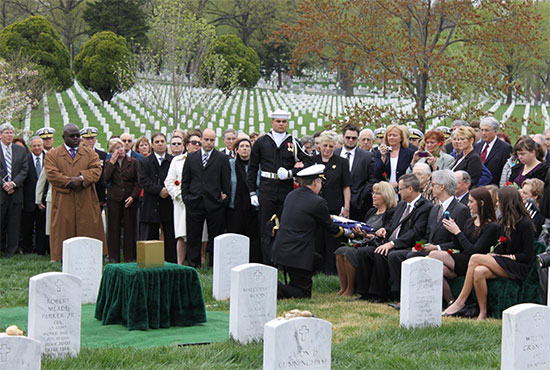
(Saying farewell at Arlington National Cemetery)
It was April 16th, the Day After the funeral. The pictures had been posted, the toasts were raised at the wake at Willow. The haunting sound of the highland pipes covered the retreat of hundreds of officers and Sailors from the grave site. Mac’s earthly remains were given over to the soil, and to the patient presence of his beloved Sara V., better known as Billie. The Boston Bombers who hit the Marathon finish line were still on the loose.
Mac had passed late the previous year, Oct 19th 2012, at peace and with his family all around. I was in Colorado at the time, and I got the news it speared me with regret, though I must say Mac’s final transition was conducted in the way that he preferred. His heart was giving out, the cardio experts at the Virginia Medical Center could not intervene surgically due to Mac’s age. He was alert, and asked what his options were. The Doctors said “Hospice,” and with that, Mac made his decision and was at peace. It was his choice all the way, just as it had been all his life.
There is a lag of months between the memorial services at Arlington and the actual interment. On this crisp day in April, the Old Guard scheduled the funeral, and Mac’s earthly remains were brought by turns to the Old Post Chapel at Fort Myer and then to Section 66, Lot 7135 on the flat plain of the lower cemetery. The Office of Naval Intelligence turned out in force, and the honor guard of enlisted and officers were led by three three-star Admirals.
I took a hundred or so and posted them to social media. Pictures are not reality, of course, but the pageant, dignity and tradition displayed is clear enough from those images. I have attended far too many of these funerals and will probably attend only one more, one in which I do not anticipate a speaking part. This was one for the ages, and is going to stand in memory for all of us.
The haunting sound of Amazing Grace and Scotland The Brave were the last echoes of the official ceremony. Mac had been a piper in his youth, and this completed another circle per his detailed instructions. The Piper is a physicist in his day job, by the way, and a good man. But his day trade is just as relevant as his skill on the pipes.
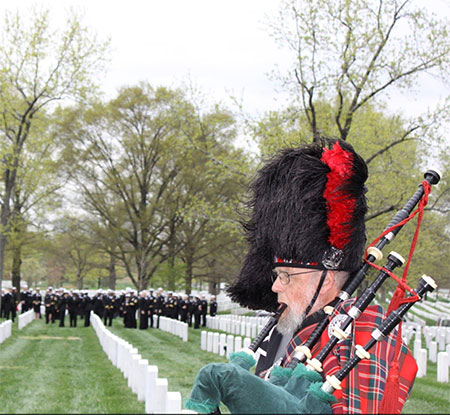
But of course there were a lot of good women and men there that gray afternoon to say farewell and Godspeed. They paid tribute to a man whose like does not come along very often, and who stood as an icon of his age. And a very good friend to many.
The world being what it is, we did not know of the latest outrage until we got to Willow to join family and friends to celebrate what will stand in my mind as the finest example of a private interment at the Nation’s place of ultimate honor.
Mac would have been proud, I think. Now we have to turn back to the events of the world we have all made, and it will be another grim bit of business. Mac would have had something to say about it, but his cares are not now of this world.
We are on our own now.
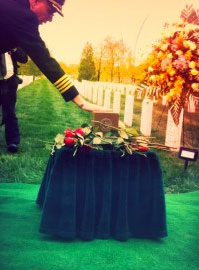
Copyright 2017 Vic Socotra
www.vicsocotra.com
Life and Island Times:Three Immigrant Gringos
Life and Island Times: Three Immigrant Gringos
After traversing the Pacific Coast Highway to Los Osos, they were treated to a home cooked dinner and visit with Augustus’s sister in law Flo and her extended family. There was much discussion about politics and the economy but none about what the riders had seen or experienced.
The next day put them on southern California interstates and freeways. About three hours into the day, the motorcycle gremlins’ reappearance looked to complicate their plans. The group’s newest bike – Rex’s Goldwing — experienced a stuck throttle cable. This was not a good thing for freeway riding.
Fortuitously they found a dealership whose mechanics quickly fixed the problem. An added benefit to the $150 maintenance stop was that Rex’s scooter gained a good deal of low and mid end acceleration after the fix.
They arrived safe and sound in San Diego after some brief confusion as to the exact location of the Navy Lodge. They dined in on takeout food and a nice bottle of red wine.
En route corner #3 they motored early the next morning their way southward against the flow of the rush hour traffic. Along the way, they passed a curious road caution sign. America may be politically divided over the issue of illegal aliens (undocumented workers?) but let no one say that it doesn’t give illegal border runners a sporting chance to cross America’s 70 MPH, 12 lane wide freeways.

As soon as they entered San Ysidro, the locus of the trip’s third corner, they detected that they were under observation. It wasn’t just the American federales and their ubiquitous cameras and sensors. The most palpable surveillance came from the town’s Hispanic residents. The bikers could feel resident eyeballs clicking as they squintily registered their gringo presence.
The riders repeatedly asked directions to the town’s post office. They received either no lo sé’s or vague maybe over that way finger-pointed directions.
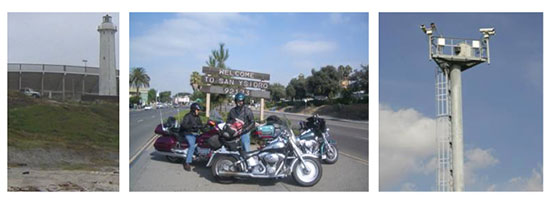
The riders’ Spanish may have been rusty, but they were quite certain that they overheard several not-so-nice characterizations of their parentage as they putted along the town’s main drag. In response, the bikers smiled and waved at the Border Patrol cameras whenever they scanned them, while being silently stunned by the San Ysidro state penitentiary exercise yard atmosphere. They took commemorative photos and hastily departed this downtown prison.
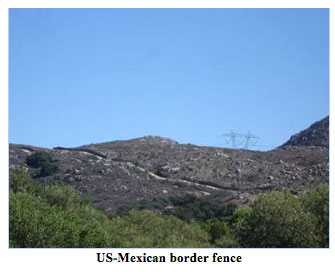
This day’s destination was Yuma, Arizona. To lessen the effects of the heat of the day they avoided the interstate as they hightailed it beyond San Diego’s eastern ‘burbs. This placed them on California route 94 which parallels the US-Mexican border. Oftentimes they were so close that they could see the border fences.
Route 94 was laid out through miles and miles of bizarre piles of smooth boulders and was crossed by a single stark railroad bridge. Augustus aptly described these rock formations as button mushrooms. Rex commented that it looked as if giant intergalactic dump trucks had mistakenly dropped their loads off there.
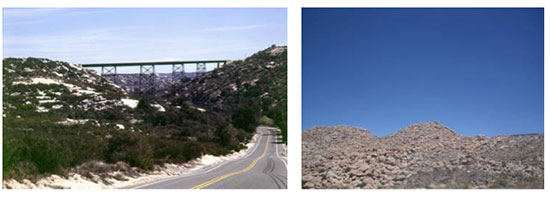
They stopped for fuel and food in Campo California, nearby route 94’s eastern terminus. While gassing up, Augustus met a gentleman who claimed to be a member of the Minutemen Project. He directed the riders gaze to the southern horizon and proudly announced that he and his fellow Minutemen had funded and built a mile and a half of the border fence off in the distance. This self-described American patriot gave them an excellent tip for our meal at a local dust-covered shack across the way.
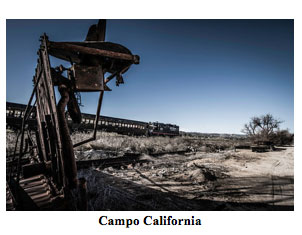
After a brief post-lunch, hotter-than-hell desert ride on I8, they jumped onto US 98. They saw evidence of the US Border Patrol’s kinder, gentler immigration control efforts. To our right about 30 yards off of the berm, the USBP had emplaced at thousand yard intervals large plastic containers filled with jugs of water. Each box was clearly marked with the word “agua.”
Spook that he was, Marlow suspected that each location was wired with sensors to alert the Border Patrol’s sector control stations of the presence of newly arrived visitors to the US. The ensuing Border Patrol welcome party’s swift arrival in monstrous white GMC SUVs would be facilitated by the freshly groomed dirt trackways that connected these water boxes.
Outside of the All-American Canal pumping stations, the roadbed and these boxes, there were no signs whatsoever that mankind belonged in this desert. They realized then at least for that day’s ride all three of them were illegal immigrants to this most hostile of environments. They simply had the good fortune to be motorized, possessed of good credit and not in need of agua de emergencia
They found their way to Yuma in a completely desiccated state. After rehydration, cool down and Motel 6 check-in, they serendipitously supped at a place for which Augustus had fond memories from his days as a Marine Corps aviator — Chretin’s. This small local Mexican restaurant chain was home to a rite of passage for all Navy and Marine Corps aviators who passed through the weapons training regimen at the local Marine Corps Air Station.
Here is Augustus’s eloquent description:
“When a squadron deployed to Yuma Marine Corps Air Station someone would make a reservation for the squadron at Chretin’s. I have seen parties over a hundred strong in the place, eating only one thing, Chretin’s nachos, and drinking only margaritas.
“The nachos are served by the dozen. This wasn’t just a desultory pile of nacho chips with a blob of melted Velveeta and jalapeños on top. At Chretin’s, each plate had a dozen chips with a square of cheese and a slice of jalapeño on top of the cheese. The whole thing is put in an oven and heated until the cheese melts. It is then served immediately.
“The nachos were served quickly because their consumption was a contest. Everything is a contest to aviators! In this case:
· how many dozen nachos could your squadron eat?
· who could drink 8 oz of green and red hot sauce the fastest and live?
· who could drink the most margaritas?
“The all time champ was my squadron, VMFAT-101. On 11 July 1974 we ate 3040 nachos and First Lieutenant Jim Segars ate the all-time individual record of 126 on the same night. Segars became an instant hero but was not to be seen for three days.
“The Chretin family had infinite patience with these scenes of vulgarity and debauchery. Their business prospered. Chretin’s was, in my mind’s eye, one of the best experiences we had together in Yuma. Alas, nothing remains the same. After Joe and Winne turned the business over to their kids, the food quality and service went slowly downhill.
So, when these riders ate there on this trip, the nachos were OK but the rest of the food was mediocre and the service less so. This disappointment notwithstanding, memories are of Chretins in the seventies and eighties when it was a place to die for and more.
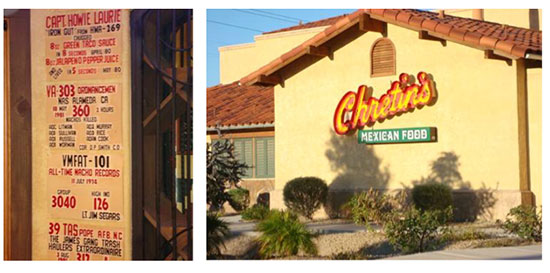
Copyright © 2017 From My Isle Seat
www.vicsocotra.com
Desotos
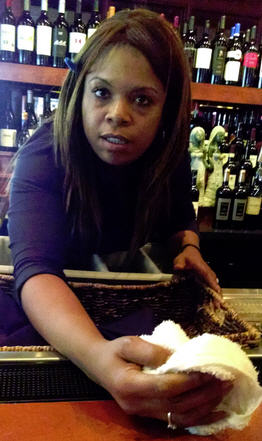
(Boomer takes that critical first Happy Hour order. Photo Socotra).
The people and employees at Willow seem to blend together into an ersatz, if quite real, family. When things were going well at the restaurant, all was right with the world. When there was a shake-up in the personnel line-up behind the bar, it was like losing part of the family.
Peter, Big Jim, Tinkerbelle, Liz-S, Boomer, Tall Sammy, Briana, Marvin…the departure of each had special circumstances and a certain period of mourning.
The bartenders were the highest visibility members of the crowd, of course, and Old Jim who holds court at the Amen Corner of the long bar. Boomer was still working there and had not moved down to Shooter McGee’s on Duke Street, and she was big and bold as life there at Willow this afternoon.
Mac and I had made plans to meet and talk about technical intelligence collection operations in the Vietnam conflict. He was still off alcohol (on Doctor’s orders, dammit!) and just sipping a bit of his first Virgin Mary about halfway down the bar when I slid onto a stool next to him.
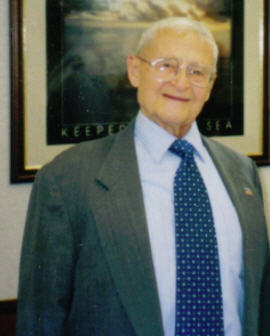
We exchanged pleasantries but didn’t talk about the election, or the economy or the prospects for World Peace breaking out. I had my pen, and I actually remembered to bring a notebook. No napkins this afternoon, and I looked at the Admiral expectantly, and he knew just where to start.
“It was 1961. In order to cope with expanding threats all over Asia, we had commenced a series of peripheral intelligence collection patrols along the Soviet and Chinese coasts known as the “DeSoto Patrols.”
“Ed Nielsen and I originated the concept back in Washington before I went out to Hawaii. It was a valuable concept that got us unique intelligence on all sorts of emitters, communications and military training. In fact, using the Desoto platforms soon had them on station from the Bering Straits to the Java Sea and through the Malaka Strait. We were trying to patrol and collection in limited areas from the Arctic Circle to south of the Equator.”
“For example, when the Indonesians acquired SAM-2 GUIDELINE missiles from their cozy relations with the Soviets, we mounted DeSoto Patrols off the Indonesian coast to try to intercept the electronic signals from the missiles. That was some of the first SAM-2 missile ELINT that the United States ever obtained. Unique stuff and very useful.”
“We used to have pre-configured vans we could load on ships. Did you use the existing electronic warfare fit on the destroyers, or did you have them take on board special equipment?”
“No real difference except for the sophistication of the equipment. We put a hut on the limited deck-space available on the destroyers to house special. Our concept for the DeSoto Patrols was to take ships
from the fleet, add equipment that the Naval Security Group would configure, and NSG would put a team onboard to work inside the hut. The intelligence collection mission was accomplished entirely from the hut by the NSG Ship-riders. They were just augmentees to the regular crew for the length of the patrol. It worked well.”
“It sounds just like some of the operations we conducted off Nicaragua with the USS Sphinx (ARL-24) when I was at Third Fleet, I said. “They pulled her out of the inactive ship facility at Bremerton to refurbish and patrol off the coast during the Contra war.”
“Sphinx was with us in Vietnam, too. Want to know how the program got its name?”
“You were interested in defunct American cars?”
“Close,” laughed Mac. “When I was head of Special Intelligence Branch at ONI in the latter part of 1961, we received a message one morning from COMSEVENTHFLT.”
“I am proud to have been a 7th Fleet sailor, Admiral. My son was, too, after he did his time out there in Yokosuka.”
“I quite agree. But you asked about where the name came from. In those days, Navy messages were had a standard slug to put in the subject line. In the case of this message stream, the subject line was: DeHaven Special Operation Off Tsingtao. The 7th Fleet Staff was proposing a special collection effort by USS DeHaven [DD-727], with NSG shipriders to operate off the People’s Liberation Army base at Tsingtao because there was some unusual training activity happening there. Ed Neilsen and I read that message early one morning in the Pentagon, and I said to Ed, “This is going to be voluminous; this operation which will create a ton of message traffic. And among, other things, we can no longer deal with that long slug line every time we have to write a message on the subject.”
“So, I took my pencil and I underlined the initial letters “DeHaven Special Operation off Tsingtao” and I abbreviated it, “DESOTO.” That, I guarantee you, is the source of the name for Desoto Program, which ultimately became extensive, successful, and eventually controversial.”
“Totally controversial after the attack on the Liberty, not to mention the loss of the Pueblo.”
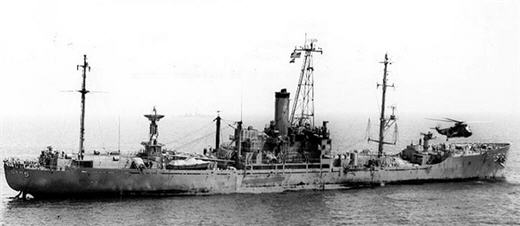
(USS Liberty (AGTR-5) receives assistance after she was attacked and seriously damaged by Israeli forces off the Sinai Peninsula on 08 June 1967. An SH-3 helicopter is near her bow).
“That is what takes us back to the Vietnam War, finally. It was a Desoto Patrol that created the Gulf of Tonkin incidents. Turner Joy (DD-951) was on a Desoto patrol in the Gulf of Tonkin when she was allegedly attacked by North Vietnamese torpedo boats.
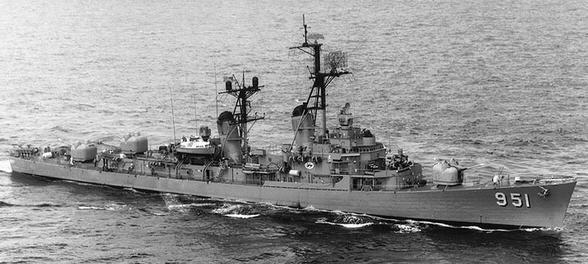
(USS Turner Joy (DD-951)).
“I have wandered into the continuing academic debate about the Gulf of Tonkin incident and I am pretty sure there are still parts of me missing. Now, you say “allegedly.” Most people feel there is no doubt about the first of the two incidents, but obviously there is considerable controversy over the second.
“I say “allegedly” because of the controversy. I am personally convinced there were two attacks, but, I say “allegedly” so I don’t get in trouble with the True Believers who maintain there was only one. Life is too short for that.”
“Amen,” I said, putting down my pen and raising my now-empty glass to get Boomer’s attention.
“Bottom line,” Mac said, “was that SECDEF McNamara reviewed the purpose and efforts of the Desoto patrols in view of the Turner Joy incident and issued an edict that, henceforth and thereafter, DeSoto Patrols were terminated. The program ended because of the Gulf of Tonkin incident — and I thought at the time it was a rather short-sided view. The DeSoto program had been extremely effective. Sure, Turner Joy
ran into a little trouble, but that was essentially one of the purposes of the program. What do you smart computer guys call it? ‘Not a bug, but a feature?’ ”
“I am a Luddite, myself, Sir. But I take your point. Presence has a certain imperative all its own.”
“Exactly. We were operating with a warship near the periphery in order to stimulate reactions and activities for intelligence collection purposes, and it worked like a charm. But here is where things went wrong. We stopped using real warships for a variety of reasons and went with platforms that had more deck-space, were cheaper to operate, and were not needed on the Gun Line in the South China Sea.”
“That was part of the Soviet intelligence collection scheme. They labeled some big auxiliaries as “AGI’s,” or Auxiliary General Intelligence. They were unarmed but awesomely capable of sucking every electron out of the spectrum, and they could hang around ports like Pearl for weeks and weeks.”
“We bought into the concept that our collectors should be unthreatening. We decided to use dedicated auxiliaries as collectors instead of warships. We configured the Pueblo (AGER-2), Banner (AGER-1), and Palm Beach (AGER-3) as essentially unarmed platforms that would be non-threatening and non-provocative to continue the Desoto-type of intelligence collection. You remember what happened as a result of that. The North Koreans were able to pick off the Pueblo, steal the radios and crypto gear, seize the ship and hold the crew hostage for eleven months.”
“It was a mess. I understand that some people say the point of the capture was to give the radios on Pueblo to the Russians, which allowed them to reverse-engineer the devices so they could use the keying material that John Walker started providing them around the same time. Having both the device and the key-code gave them access to our tactical communications in Vietnam. It was still going on as late as the 1980s.”
“If we had to fight them at sea, we would have had a worse situation than the Japanese when we penetrated their JN-25 communications,” said Mac. “If you have no secure communications, the enemy knows your intent.”
I allowed myself a little shiver. “I was out there then, and that would not have been pretty.”
Mac shook his head in agreement. “I was part of the Pueblo damage assessment later at DIA. I wish that had been one of the key conclusions- that our communications had been massively compromise and we might have changed the radios sooner. I will have to tell you about it, and how I met Wanda, who wound up in the Front Office at DIA for the next thirty-odd years.”
“I have always respected her,” I said. “ She was always kind and always professional.”
“And remember, it was the age of the mini-skirt,” laughed Mac.
“I just wish I could have met her when you did, Sir!”
Mac just smiled.
Copyright 2017 Vic Socotra
www.vicsocotra.com
Life and Island Times: Down in Monterey
The next day and half were off days. Rex’s wife wanted to see him and visit Napa valley and Steve was rejoining the group. This revised their travel schedule. So after much wine and rest was had, “three days of understanding” were on tap down in Monterey. It was easy for Marlow and Steve to sell this desire to maximize enlightenment. They hastened the group’s arrival for a midday lunch by the bay on Cannery Row.
Their path from Vallejo hurtled them along California route 37 and US 101 to an early commuter hour crossing of the Golden Gate Bridge in pea soup fog. Given the traffic density and excess speed encountered their pucker factors registered in their gauges’ “diamond creation” section. This indicator’s needle didn’t return to a normal reading until they had passed through the Embarcadero. After a few miles they were deeply grooving and harmonizing along California’s route 1 and the Cabrillo Highway.
The coastal scenery from Frisco though Santa Cruz to Monterey was a veritable pop festival treat for the senses. They listened and they played. Seals were barking; gulls were keening. Flowers were blooming and pleasuring them with their scents. The road’s young gods must have been smiling down on them, since they fell under a spell as they flew low and fast through this mind blowing landscape. Their souls danced as the California seascape’s magic music riffed before their eyes until they were down in Monterey.
Yeah!
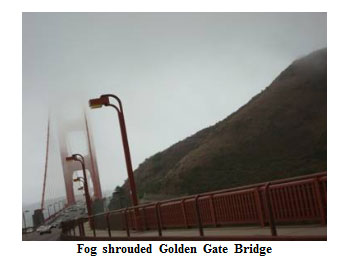
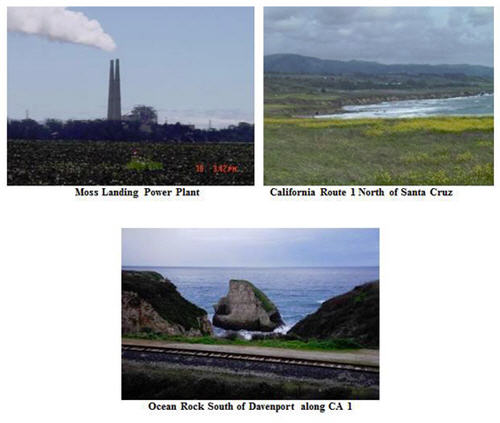
They ate lunch and chatted along the bay for a long time. They were effortlessly chilling until one of them decided it was time to check into their accommodations at the Naval Post Graduate School Navy Lodge. Much time had passed since Malrow and Steve last navigated these roads and the streets had changed a bit. It took a few passes until they made the correct turn onto the steep road that climbed up to the La Mesa housing complex and the lodge. No harm. No foul.
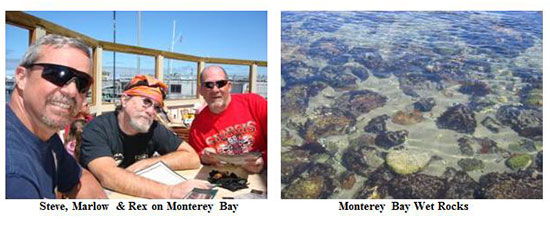
Steve and Marlow wanted to take the group to a bayside Pacific Grove restaurant they had visited many years earlier. It took them a while before they found it adjacent to Lover’s Point with its spectacular view, friendly staff, ample wine list and scrumptious food. They gathered the troops and enjoyed a spectacular sunset and a fabulous meal.
Sunset from Latitudes Restaurant Pacific Grove CA Nighttime Lighting at Latitudes Restaurant
The next days were planned to be a prolonged stalking of the Monterey sublime. It was a simple plan to sample the delights as they rode the peninsula and the Pacific Coast Highway south from Monterey to Augustus’s sister in-law’s place in Los Osos.
Regrettably harsh reality intruded again. On the way home from the restaurant the previous night, Steve’s bike developed a severe mechanical condition — its rear wheel bearings were completely shot. The local Seaside Honda dealer could get the job done but it would require two days to ship the parts for his rare 1997 Valkyrie. We parted ways with plans to rendezvous a third time with him at his sister’s place in New Mexico.
Almost immediately upon starting the day’s ride, Augustus and Rex found themselves helpless before the Monterey peninsula’s beauty. It seemed to do that to its guests – grabbing their hands, leading them on walks along its paths, while playing soft violin music and making them get misty. They became hopelessly lost and oblivious of everything other than this place and the moment, never wanting to leave its dreamscape.
The days were crystal clear and a bit chilly. A ride to Carmel Valley was pleasant. A left turn off of California route 1 and onto the Carmel Valley Road was an ode to joy. Its 50+ miles round trip flowed with classic California twistiness. They reveled in its dappled light, desertedness and vistas.
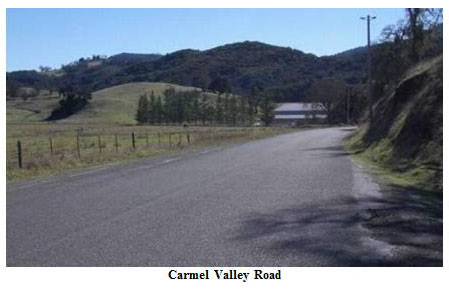
They couldn’t tarry long. They had a prior engagement with an obscenely beautiful place.
Marlow had first visited Point Lobos State Park more than 30 years ago when he was a student at the US Navy Post Graduate School. He went there often with his two daughters.
One early visitor and landscape artist had dubbed it “the greatest meeting of land and water in the world.” Even if one didn’t find this extravagant verdict true, most would rank the park in their life’s top five places to visit. The biker trio walked gently though the cypress tree-clad headland. They breathed its spirit deeply. Gorgeous beyond belief . . .
The next day they headed south towards Big Sur and lunch. This portion of the PCH had long straights, sweeping corners, tight corners, blind corners, and smooth corners. There was a little bit of everything to pique their appetites and soothe their souls. They went with the flow the entire way to the Nepenthe Inn.
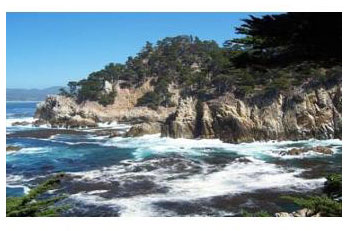
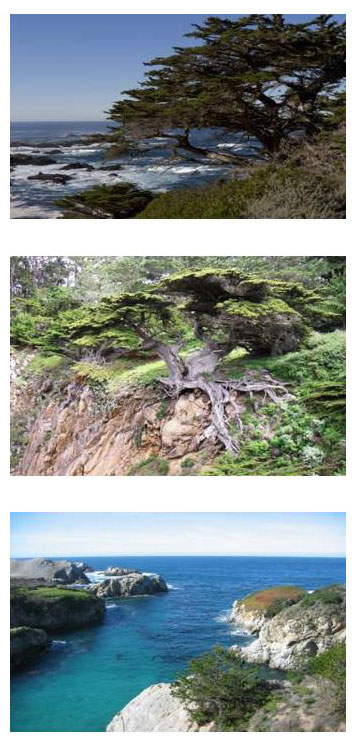
Road religion born anew daily on the Pacific Coast Highway (PCH or CA route 1)
Nepenthe’s food was as always exorbitantly expensive — $16 for a hamburger. They were paying for the view and quite probably someone’s yacht. Its Ambrosia burgers were superb. The cliff top views along the edge of America were fantastic. They felt like we were clinging to a cloud.
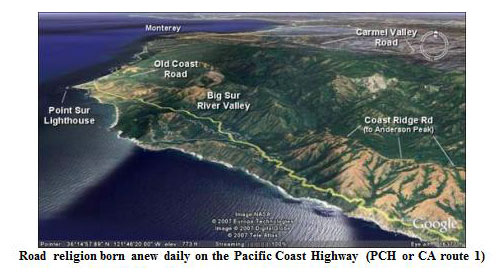
Just prior to departing the Inn’s tree-shaded parking lot, two small children approached their idling scooters. They were clothed in typical Big Sur, post-hippie era, ragamuffin attire — flannel shirts, shorts and sandals. These towheads exuded a charm that instantly captivated the bikers. Followed at some distance by their lissome 20-something mother, they wanted a closer look at their rumbling bikes. They offered the children a chance to sit upon the bike. With their mother’s encouragement, they trusted them to lift and deposit them upon the stitched leather seats that floated above the growling monsters. Each one gingerly at first and then with gusto gave the throttles a twist or two. Thus thrilled, they talked ceaselessly of their uncle’s motorcycle. After one last seat perching and several more exhaust pipe brappings, they parted company. It was just one of those special road trip moments that happens from time to time.
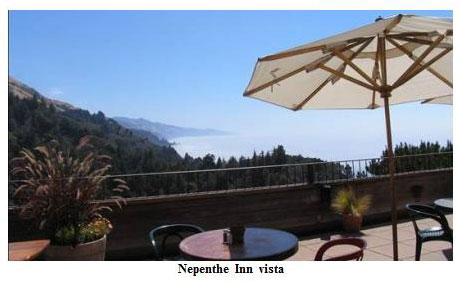
They spent a long time at Nepenthe. It was worth it. The spell was complete. Alas, they had the bulk of the day’s riding to finish.
Departing well past 3 PM, they were forced to skip a planned visit to the Hearst Castle. Even from the road, they could tell that the San Simeon mansion maintained its reputation as “what God would have built if he had had the money.” They also refused the roadside billboards’ discreet invitations to other state parks and stunning vista pull offs, preferring to glide upon the road.
An indelible memory from that afternoon ride:
a single cypress atop a hill moaning from thirst . . . its needled arms lifted in supplication
to the cloudless blue sky for relief . . . an errant knife-edged thin cloud briefly engulfed it . . .
the sliver of fog bisected the cypress’ golden brown hill before disappearing in a poof.
They could have wandered this wonderland a long, long time.
Copyright © 2017 From My Isle Seat
www.vicsocotra.com
Hugging A Tree
The bark is rough against my face
My arms, too short, to wrap around
The girth of the god of this forest place,
Me, a few decades’-worth of meat
And fat, the tree has seen hundreds
Of seasons, through cold and heat,
Twisted by winds, it has grown
Into a giant, and I, embrace its life,
Both of us breathing, and alone…
copyright J.P.N. | Poetry, Etc., From Kanagawa, South of Tokyo, Japan
www.carllafong.blogspot.jp
Way Down Yonder (In Vietnam)
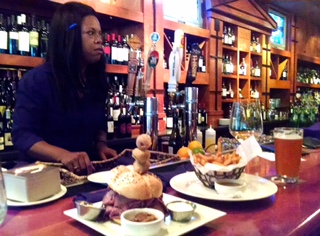
(Boomer behind the bar at the Amen Corner. Photo Socotra).
Willow was bustling, and it was with good reason. The last Friday night of the month was the fabulous Buffalo Night, in which Tracy O’Grady re-creates the most famous sandwich to ever come out of Buffalo, New York: the astonishing ‘Beef on Weck.’
BOW is composed of a slow-cooked locally-raised grass-fed steamer round of beef, thin sliced and piled high on one of Kate Jansen’s amazing Kemmelweck Kaiser rolls, topped with fennel and sea salt. They are so good I normally ordered two in advance to prevent being disappointed when they sold out. I would normally eat one at the bar and take the other one home to snack on the rest of the weekend.
Mac normally dines at The Madison across Fairfax Drive where he lives, but he could sense the excitement as the Regulars filed in and asked Big Jim behind the bar whether the “beef was resting” prior to being carved up into succulent slices.
Mac was dressed in a natty coat and tie, since Buffalo Night we all come straight from the office and look vaguely professional. Boomer was behind the bar, and bantering with the regulars as she normally does in the brassy manner that endeared her to us.
I picked up my pen and slid a stack of napkins over to where I could get at them. “I am afraid we are getting to your return to O’ahu in the early 1960s.”
“Why do you say it that way?” he asked, having a sip of Virgin Mary, since the Doctors were being cruel to him this week.
“Because I am starting to remember some of the events you are describing and it doesn’t seem that long ago,” I said with a laugh.
“You are not going to pin me down like that. I will tell it the way it actually happened, and to do so I have to go back a year before I took the family to Hawaii. It was 1961 when I returned from the senior course at the Naval War College in Newport. After graduating in the summer, I was ordered to ONI again to be the Head of “Y” Branch.”
“Which was the Special Intelligence Division, right?” I asked. “It had become something else by the time I was around.”
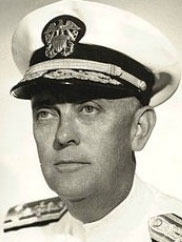
(RADM Vernon L. Lowrance as DNI. A World War Two submariner, Lowrance had been awarded the Navy Cross for gallantry. Navy photo).
“Yep. We had a suite in the Pentagon for the various components, not far from Rear Admiral Vernon L. Lowrance’s office as the DNI. Shortly after I arrived and got settled in the building, I had a session with the Admiral in which we discussed my future career. I told him that I would like to branch out of Naval Intelligence to do some things other than pure OPINTEL to broaden myself. I told him I was in a rut and I would like to try something different like an attaché assignment or some other form of Naval Intelligence service.”
“Sounds like fun being a diplomat and open-source intelligence collector going to cocktail parties, but a lot of Attachés got passed over later for being away form the Navy too long.”
“I know, but I was restless. The DNI was sympathetic to my request, but he said “You’re in a rut that an awful lot of people would like to be in with you.” And then he said, “I don’t have a lot of sympathies for your desires to go elsewhere.”
“I told him, if I was to stay in that line of work, that my ultimate desire was to get Eddie Layton’s job as the Intelligence Officer for the Pacific Fleet. That was my desire, and had been ever since the war. My time in Europe and the growing realization of the Soviet Threat never kept me from keeping a fond eye on the activities at CINCPACFLT and who got the jobs as the top Naval Intelligence officer in the Pacific, which was viewed as a job that could be a springboard to selection for Flag. I wanted a shot at it, eventually.”
“You can imagine my surprise when just a few months later, the DNI called me to his office on the fifth Deck and told me he was prepared to send me to CINCPACFLT in the near term if I really wanted to go. I had some misgivings. I only had two years in grade as a Captain, and the job was really for a mid-to-senior officer. I questioned whether I would really be acceptable to the Fleet Commander being that junior, and he assured me “that’s no problem, I’ll take care of that.”
“Always take a challenge” said Mac, as Boomer came by, inspecting the level of liquid in everyone’s glass. “That was my motto, and I told him, “Yes, I’d love to go. So, I agreed, he agreed, and orders were cut to detach from the Pentagon in the summer of 1962 and relocate to Pearl Harbor, where I reported in August.”
“Just in time for the World Series. Didn’t the Yankees beat the San Francisco Giants?”
Mac smiled. “I never had much time to follow baseball, and there is a six hour time difference, remember. It made listening to the games too hard, and who cares about the Yankees, anyway. I had a big job to start. I really was the assistant chief of staff for intelligence when I reported. Three years later I was selected for admiral, and I made my number in December of 1965. That promotion made me the senior Division Chief on the staff for my last six or seven months in the job.”
“How did you feel about that? Your staff during World War II was fighting a global war, was all over the Pacific, and Eddie Layton was about the only Captain that you dealt with. Did you feel that there had been a grade creep out there at that point?”
Mac furrowed his brow. “Well, I think there was a grade creep everywhere. But, I think it was a necessary evil, since Admiral Nimitz had kept his PACFLT staff during the war a very lean organization. The number of officers in the Intelligence Division could practically be counted on the fingers of one hand. But there was the huge organization of JICPOA and the Fleet Radio Unit to back up the Intelligence Division. After those large organizations were done away with in 194l, the intelligence staff itself became larger. And that was true, more or less, of all the divisions on the staff. The staff grew in numbers, because it was an creature unto itself, rather than being supported by a number of subordinate organizations. I don’t remember the numbers in the Intelligence Division, but we must have had 30 or 35 officers in the various sections. It was a large and very busy organization.” Mac paused to wet his whistle and munch on a stalk of celery that stood proudly in his glass.
“Of course, the Vietnam War was just cooking off, and there were many things that had to be done. I mentioned outside organizations that supported us. We did have the Fleet Intelligence Center over on Ford Island to support us, but FICPAC was of relatively little direct support to the staff. FICPAC instead was supporting the fleet, mainly with photography work and with producing targeting materials. Those kinds of things could be produced on a production line basis. What we were doing at the Headquarters, where I was responsible for figuring out what it all meant with analytical work and current reporting and responding to the daily crisis, whatever it was.”
‘
“That hadn’t changed, Sir. Same deal, different year.” I looked at my notes. “The first American casualty of the war was in the 1950s, I said taking a sip of Happy Hour white. “But you were there when things were just starting to get hot. When I worked there, we still had your Vietnam work-week: half day on Wednesdays and they expected a half-day in Saturdays, too.”
“We felt we needed the continuity on the mission and didn’t want to lose details if the analysts were off the whole weekend. We were busy. We were setting up field activities in the Philippines. In hindsight, I think we responded to Fleet requirements one at a time. It was like this In 1961, when I was back in “Y” Branch in Washington. We had commenced a series of peripheral intelligence collection patrols along the Soviet and Chinese coasts known as the DeSoto Patrols.” Ed Nielsen and I originated DeSoto patrols, but I am tired and that is going to have to wait to another session.”
Boomer came down the bar and slid one of the fabulous beef sandwiches in front of me and Mac looked on with interest as she topped off my wine.
“There are other important issues to talk about right now. Do you think the Beef on Weck sandwiches are sold out yet?”
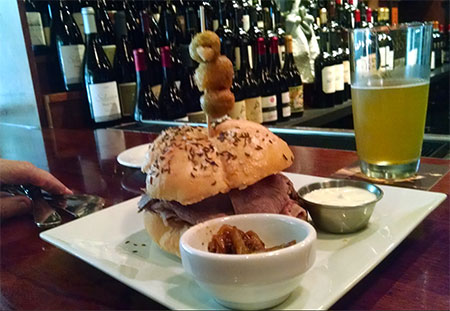
(Willow’s Beef on Weck comes on that fabulous kaiser-style Kemmelweck roll, pierced by a garnish of three deep-fried olives, a side of caramelized onions and Tracy O’Grady’s traditional creamy horseradish sauce. The one I take home can make three or four lunches).
Copyright 2017 Vic Socotra
www.vicsocotra.com
Life and Island Times: Hell’s Anvil
The Pacific coast’s volcanic mountains were this day’s west coast riding focus.
The first eight miles along their southward US97 trek was a long winding four lane hill climb up from their Columbia River valley floor motel at Biggs Junction to the high plains of north-central Oregon’s wheat belt.
Once on the plain they could see to the east the mountain trails that lead to the Clarno Nut Beds. These archeological sites are world famous, since they contain the most varieties of ancient life form specimens in a single location. During the Eocene period (38 – 55 million years ago) the area was like sub-tropical Costa Rica. The endless wheat field terrain that stretched between the eastern and western horizon mountain ridges was undisturbed save for the vast numbers of electricity generating wind turbines.
Fifty miles or so along this plateau ride they passed through what appeared to be a ghost town. The signs said it was called Shaniko. The buildings appeared to be turn of the 20th century in origin. There was an abandoned fire truck that forlornly stood next to the road way. They couldn’t puzzle out the vehicle’s portents were as they putted past. Given the past week’s events, they were sure that it was attempting to tell them something.
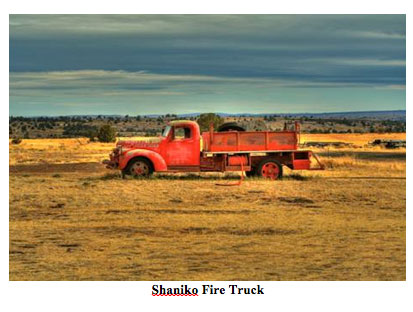
The day’s primary attraction was Crater Lake National Park, a little more than three hours south of Shaniko. Starting just north of the park until they passed Mount Shasta on I5 they journeyed along Oregon’s and California’s scenic volcanic byways. This encompassed the brims of volcanic lakes, diverse wetlands, scenic ranches, thriving croplands, and forests full of bald eagles.
The volcanic part of this segment was unbelievable! It was like motoring through the 1940 Disney movie landscape of Fantasia where the dinosaurs marched to their deaths as earth’s volcanoes suffocated most living things on Earth accompanied by classical music.
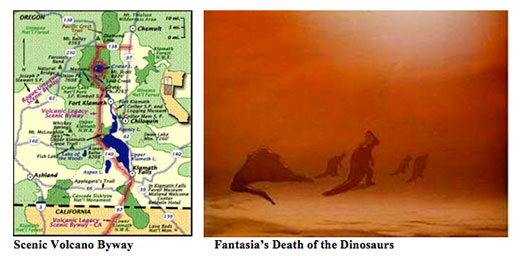
Crater Highway started just inside the park’s entrance amidst a verdant alpine forest setting and ended at the lake by way of a charred volcanic flatland and craggy mountain reaches.
They made their way to the crater’s edge through a veritable blizzard of a billion mating yellow butterflies that suicided themselves on their scooters, clothing and goggles. The last half mile to Crater Rim Drive was additionally complicated by the narrow 22 foot wide road’s severe drop offs on both sides. Here was another daily double: a not-so-tasty bug plague and a knife-edged road ride.
Crater Lake was once a towering mountain that was decapitated by a massive volcanic explosion 7700 years ago. At 6 miles wide it is America’s deepest lake at 1,943 feet. No place else on earth combines a deep, pure lake, so blue in color; sheer surrounding cliffs, almost two thousand feet high; two picturesque islands; and a violent volcanic past. It is a place of immeasurable beauty. They rode the rim for a little more than half of its 33 mile circumference.
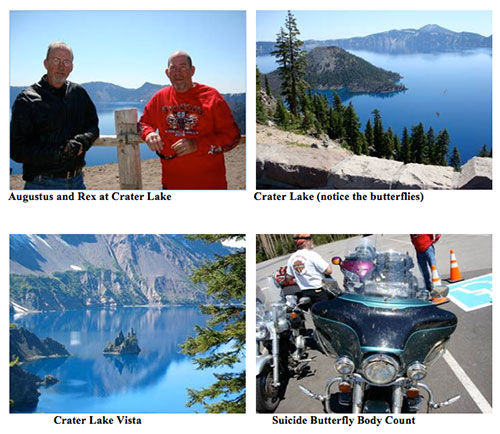
After eating a leisurely lunch at the park’s Annie Creek restaurant, they hurried out the back entrance of the park to reconnect with US 97, cross into California, join and head south along I5 and ride past Mount Shasta en route another scooter oil change at a Redding California motorcycle dealership.
While they had not travelled the minimum miles for a scooter sludge exchange, they tried to treat their rides gently since they depended on them for so much.
The eighty five miles from north of Weed on route 97 and along I5 to Redding encompassed the hottest place they had ever been in their lives. That included the military desert survival school in the California in the 60s and 70s.
For more than an hour and a half, they were assaulted by hellish temperatures exceeding 117 degrees Fahrenheit, while doing 65+ MPH. The sun was a malevolent and merciless furnace with their motorcycles’ engine heat pushing their bodies past their melting points. The wind blast acted like a bellows superheating their insides. The concrete anvil’s pavement reflected heat coupled with wind blast probably raised the effective temperature on their chests and faces to in excess of 150 degrees.
As they turned onto I5, they hazily connected the abandoned fire truck dot in Shaniko to their situation as they seared themselves past well done. They breathed exclusively through their noses the last sixty minutes, since opening their mouths scorched their lips and tongues.
Metal surfaces on their bikes including the clutch and brake levers burned like hell when touched by the exposed skin of their hands.
They were being pounded by an unseen fiendish iron worker. They sensed themselves weakening under this assault. Next they lost their sense of smell and were astounded by this inability to detect the oily unburnt diesel odor in the struggling semis’ exhausts as they labored up and down the volcanic mountain sides along I5’s track.
During the last fifteen miles, they ceased sweating.
Oblivious of the prospects for tire-thrown debris, they repeatedly sought the coolness in the eastward leaning sun shadows cast by high balling, semi-tractor trailers. After 30 seconds of relief, they would move on out of these danger zones back onto the pitiless smith’s pounding block for more hammering.
They arrived at the dealership without incident. In a state of heat exhaustion, they woozily staggered off of their bikes and into the air conditioned showroom. Marlow soaked his head and gulped down a large quantity of cold fountain water. Augustus stood stony eyed underneath a fast moving ceiling fan in the middle of three dozen chromed-out Harley Davidson models. It was twenty or thirty minutes before Rex began sweating again as his core temperature dropped to acceptable limits. It was another ten minutes before Marlow and Augustus could talk to the dealership’s maintenance department about the oil changes they had originally wanted.
Thoroughly exhausted, they booked rooms at a Motel 6 next door to the dealership. None of them remember much from that day after they cooled down in the dealership. Augustus later told Marlow that Rex took a dip in the motel pool. Rex to this day doesn’t remember doing so.
They annealed themselves that day. That long heating, relentless pounding and slow cooling altered their humanness that afternoon. Their natural properties of strength and brittleness shifted. Like metals on a blacksmith’s anvil, they were shaped and formed on that concrete pavement hammering block for as yet unrevealed ends.
Hardened by the Highway
Five-hundred miles from the Canadian border
The days getting longer, the days getting hotter
Hardened by the highway leaning on blue elixir
A little bit drier but not much wiser
The days keep on running down through the seasons
Ran through a fiery mountain road, wildly for no reason
Devil almost collected his due for the moments they’re seizing
Still nothing was lost that’s left to believe in
They got little to lose and their only companions
Are the roads they love, the hills they are rambling
Engine roars echoes from the back of the canyon
Hungry for more than plain understanding
Sometimes it gets hard, sometimes it’s amusing
When wisdom gained is just an illusion
When blind old men know best what to make of confusion
And dead men know nothing at all
Still they dream of a road that’ll curve out in front of them
They hope for another day when the sweet road will guide them
To a place where all pain will drain from them
They’ll pull off riding boots with the day’s traveling behind them
But it’s five-hundred miles from the Canadian border
The days getting longer, the days getting hotter
Hardened by the highway they ride on its shoulder
A little bit tired, a little bit older
Copyright © 2017 From My Isle Seat
www.vicsocotra.com
